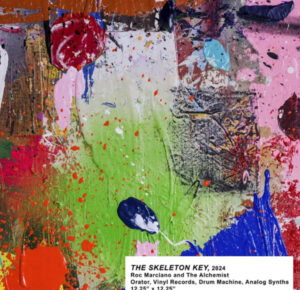The “Waterfront Oasis” installation at Canary Wharf stands as a deliberate contrast to the financial district’s steel-and-glass skyline. With its blend of natural and artistic elements, the installation creates a meditative space in one of London’s most fast-paced environments. While the concept of offering tranquility in a financial hub is commendable, the installation’s execution reveals both strengths and weaknesses in addressing urban space’s complexity and purpose.
First, the name “Waterfront Oasis” suggests a retreat—a place of calm and solitude in the midst of a bustling city. This intention is clear in its design, where elements of water and greenery invite people to pause, reflect, and disconnect from the noise and movement of Canary Wharf’s financial machine. The water features, in particular, bring a sense of fluidity and calm, while strategically placed plants soften the harshness of the surrounding architecture. The juxtaposition between nature and the city’s imposing modernism works well on a symbolic level, offering a vision of balance between the organic and the industrial.
However, while the installation succeeds in creating a serene atmosphere, it raises questions about accessibility and interaction with its audience. Canary Wharf, despite its growing reputation for public art, remains a space dominated by corporate culture, and the “Waterfront Oasis” seems tailored more for office workers seeking brief moments of escape than for the general public. In this sense, the installation may not fully engage with the broader community or visitors beyond those directly tied to the district. Its primary audience appears to be the business class, raising issues about the inclusivity of public art in urban planning.
Additionally, the installation can feel somewhat at odds with the larger environment. Canary Wharf’s relentless focus on productivity and finance creates an atmosphere where people are in constant motion, often too busy to pause and appreciate the quieter, contemplative aspects of “Waterfront Oasis.” This raises the question of whether such spaces can genuinely transform or impact the mindset of those who pass by. While the installation’s aesthetic quality is undeniable, its ability to foster meaningful reflection in a place driven by efficiency is more questionable.
Another issue lies in the temporary nature of the installation. “Waterfront Oasis,” like many urban art pieces, is subject to removal or change, limiting its potential to become a permanent part of the city’s cultural fabric. Temporary installations can be exciting, but their fleeting nature often means that the deeper messages they seek to convey are quickly forgotten. In this case, the idea of balance and tranquility in a fast-paced world is important, but the transient nature of the installation undermines its lasting impact.
In contrast, Rasid Necati Aslim’s photograph of the installation for Anadolu Agency captures the serenity of the space in a way that may be lost on those who rush past it daily. The photograph frames “Waterfront Oasis” as a stark contrast to its surroundings, highlighting the tension between the calm it offers and the intensity of the financial district. This image serves as a reminder that art can transform how we perceive urban environments, even if only momentarily.
“Waterfront Oasis” succeeds in creating a peaceful space in Canary Wharf, it ultimately raises questions about the role of public art in such hyper-commercial environments. Its limited accessibility and potentially short lifespan prevent it from fully engaging with its broader audience, limiting its potential as a transformative urban intervention. Despite these limitations, it still offers a welcome, if fleeting, moment of respite in one of London’s most hectic areas.
No comments yet.








